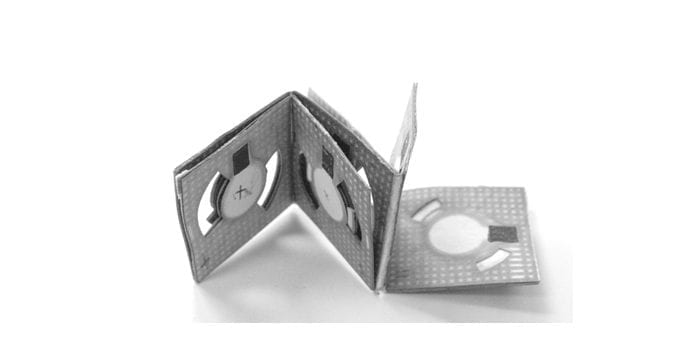Binghamton engineer develops an origami folding battery costing just a few cents
Japanese engineer has shown the world that the art of Origami can be channelized into an inexpensive bacteria powered batteries that can power bio sensors in future.
Seokheun “Sean” Choi, an engineer at the university of Binghamton, New York, has developed a bacteria-powered battery using only paper and few drops of dirty water. Choi has shown the world that the Japanese art of Origami can also be applied to modern technology in the form of batteries.
This foldable ‘origami battery’ is just about the size of a match stick and can be developed for mere 5 cents.
Basically, here the dirty water is absorbed by the paper via capillary action. Dirty water or sewage water is a rich source of organic matter and it contains a lot of micro organisms. When these micro organisms respire the outcome leads to generation of small amounts of power, which could be a couple of watts.
This power, though not enough to charge a smartphone or any consumer electronic; however the technology can definitely pave its way into building tiny batteries that can power the biosensors.
Seokheun “Sean” Choi says: “Dirty water has a lot of organic matter and any type of organic material can be the source of bacteria for the bacterial metabolism. And we don’t need external pumps or syringes because paper can suck up a solution using capillary force.”
The technology would be helpful in cases where the resources are limited, such as for individuals working in underdeveloped country or remote areas.
Paper based batteries which were used earlier required certain special nano materials; however the added benefit in Choi’s technology is that it does not require any specially engineered materials as such.
Choi further adds that if these origami batteries are paired with bio sensors then one would get a very cheap self sustaining as well as biodegradable device.
Choi has received a fund of $300,000 from NSF (National Science Foundation) and for the next 3 years he will divert his focus on enabling the battery to create energy which will in turn be able to run the biosensors.
Basically, this battery can act as a key material while creating the tools for experts who majorly work with disease control and prevention in the developing countries. Paper is very cheap and a material which is easily available across the globe, this is what makes the battery very much handy and bacteria can be obtained from biomass or watersheds or even local waste water.
The details of the study and the technology has been published in the July edition of the journal Nano Energy.
Source: Binghamton University

